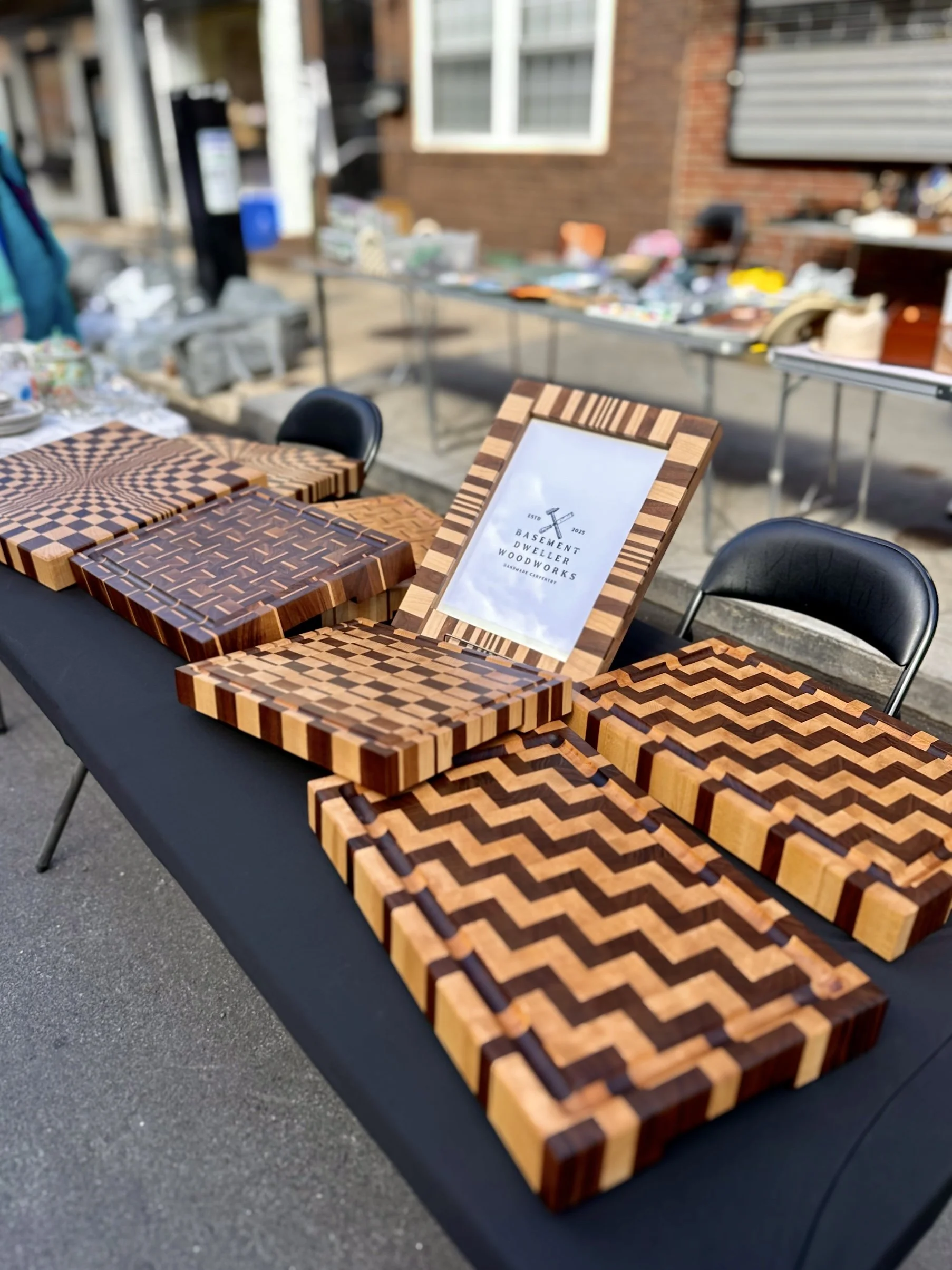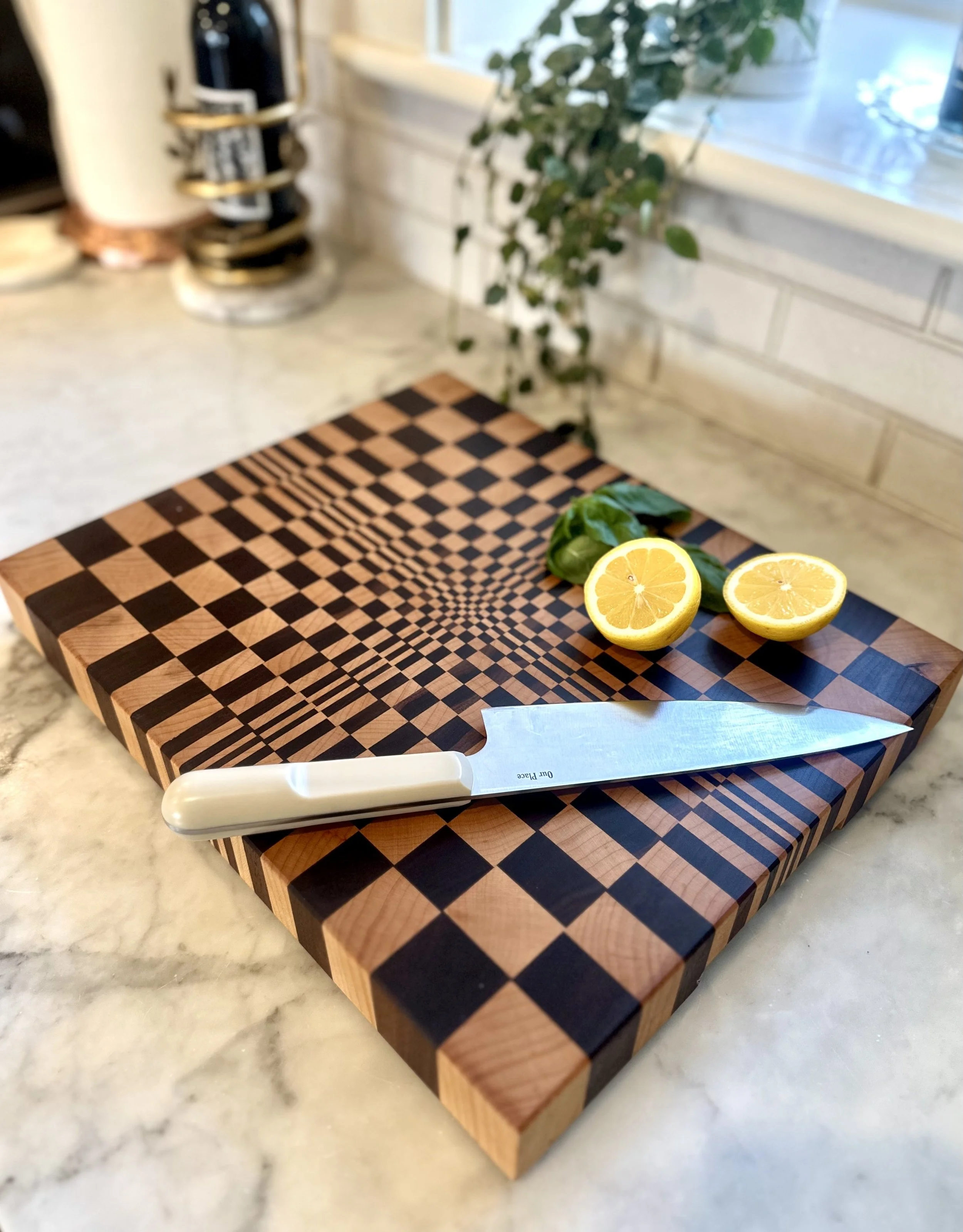FREQUENTLY ASKED QUESTIONS
Q: What makes end-grain cutting boards different from edge or face grain boards?
A: End-grain boards are constructed from cross-sectional cuts of wood, where the grain faces upward. This design lets knife edges slip between the wood fibers—extending the blade life—and gives the board a self-healing quality as fibers close after cuts. They also hide scratches much better than edge-grain boards
Q: Are end-grain boards better for knives and food safety?
A: Yes. Because the wood fibers compress rather than slice, they are gentler on knives. End-grain surfaces also tend to harbor fewer bacteria, as microbes are more likely to cling to longitudinally cut surfaces used in edge boards
Q: What types of wood do you use and why?
A: I prefer tight-grain, food-safe hardwoods such as maple, cherry, and walnut. These woods resist moisture, have small pores that reduce bacterial buildup, and are easier on knife edges
Q: Do I need to do anything special to maintain my end-grain board?
A: Yes—compared to edge-grain, end-grain boards require a little more love. I recommend daily cleaning with warm water and mild soap, drying upright, and periodic conditioning with food-grade mineral oil (I use Walrus Oil and wax which can be purchased right here). Reapply finish frequently at first—after one day, one week, one month—then about every 4–6 months. This prevents cracking, warping, and seam separation. Never, EVER put in the dishwasher- hand wash only. With proper care, an end-grain board can last decades
Q: Do you offer custom sizes or designs?
A: Absolutely. Whether you want a compact minimalist board with handles and juice grooves or a big boy with an intricate 3D pattern, I got you. Just reach out with your ideas! Turnaround time is typically 2-3 weeks
Q: Why are these boards often thicker and more expensive?
A: End-grain boards require multi-step construction: milling, cross-cutting, glue-ups, flattening, sanding, adding handles and juice grooves. The process—from cutting the blanks to finishing—takes significantly more labor and skill than for edge-grain boards. The thickness (usually ~1.5–2") supports durability and stability
Q: Can I buy your boards locally?
A: Yup! You can find some of my boards at C. M. Neff Cook Supply in South Philly on East Passyunk Ave. I also like to participate in local events and craft shows, keep an eye out on my Instagram for updates!



